Related Research Articles

The Caledonian Canal connects the Scottish east coast at Inverness with the west coast at Corpach near Fort William in Scotland. The canal was constructed in the early nineteenth century by Scottish engineer Thomas Telford.
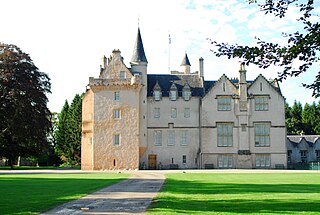
Brodie Castle is a well-preserved Z-plan tower house located about 3.5 miles west of Forres, in Moray, Scotland. The castle is a Category A listed building, and the grounds are included in the Inventory of Gardens and Designed Landscapes in Scotland.

Aquia Creek sandstone is a brown to light-gray freestone used extensively in building construction in Washington, D.C. in the late 18th and early 19th centuries. Quarried at Aquia Creek in Stafford County, Virginia, the stone was valuable for its ease of shaping and the quarry's proximity to the tidewater portion of the Potomac River, 45 miles (72 km) south of Washington.

Donibristle was a house and estate in Fife, Scotland, on the coast of the Firth of Forth. Only the wings of the house remain, within the modern settlement of Dalgety Bay. They are now protected as a category A listed building. Donibristle was the scene of the killing of James Stewart, 2nd Earl of Moray, in 1592, which is remembered in the ballad "The Bonnie Earl O' Moray".
Dunphail House is an Italianate country house in Moray, Scotland. It was designed by William Henry Playfair for Charles Lennox Cumming-Bruce, and was completed in 1829. Originally designated a Category B listed building in 1971, it was upgraded to Category A in 1987, and remains a privately owned residence.

Craigmin Bridge is an eighteenth century bridge within the grounds of Letterfourie House, in Moray, Scotland. Spanning the Burn of Letterfourie, it once formed part of the main approach road to the house. Probably built by Robert Adam, who designed the house, it is a Category A listed building, and is currently on the Buildings at Risk Register for Scotland.
Letterfourie House is a Georgian house in Moray, built by Robert Adam and completed in 1773. Its main block has three main storeys, with a raised cellar that opens onto the shaped water gardens on its south side. It was designated a Category A listed building in 1972.

Dyke Parish Church is a Georgian church in Dyke, a village in Moray. In active use by the Church of Scotland since it was built in 1781, it stands on the site of a mediaeval church, and incorporates an older mausoleum, which is now the church hall and vestry. An early mediaeval Pictish cross slab, and a twelfth century coin hoard were discovered in the grounds while the church was being built. It was designated a Category A listed building in 1971.

The Carron Bridge is a bridge at Carron in Moray, Scotland, which crosses the River Spey between the parishes of Knockando and Aberlour. It was built for the Strathspey Railway in 1863, to a design by Alexander Gibb, an engineer for the Great North of Scotland Railway, and fabricated by the iron founders William McKinnon and Co. It originally carried both the railway and a roadway, but the railway has now closed.

Coxton Tower is a late sixteenth-century tower house in Moray, Scotland. Heavily fortified, it was built around 1590, with substantive repairs in 1635 and 1645, but its design is reminiscent of much older buildings. It has not been occupied since around 1867 except to house Canadian soldiers during the Second World War, but was renovated in 2001 to help protect the fabric of the structure, which is designated a Category A listed building.

Mortlach Parish Church is a church within the Church of Scotland serving the parish of Mortlach, in Moray, close to the village of Dufftown. The site of the church has long been associated with Christianity, going back perhaps as far as 566 when St Moluag is said to have founded a religious community there. A Class II Pictish stone, dating from between the seventh and ninth centuries, was discovered there, which can now be seen in the burial ground. There was a bishopric on the site in the eleventh and twelfth centuries, prior to it being moved to Aberdeen in the reign of King David I. The current church retains some of the fabric of a thirteenth-century structure, which has been repeatedly remodelled in the centuries that followed, most recently in 1931. The church, along with the surrounding burial ground and a watch house within the grounds, has been designated a Category A listed building.
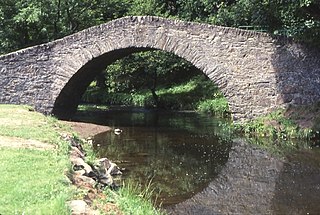
Keith Old Bridge, also known as Keith Auld Brig, is a bridge over the River Isla in Keith in Moray, Scotland. Built in 1609, it is the oldest surviving dated bridge in Moray and is a Category A listed building.

Braco's Banking House is a three-storey town house in Elgin, Moray in Scotland. The home and business place of banker William Duff of Braco from 1703 to 1722, the house has borne his name ever since. It was designated a Category A listed building in 1970.
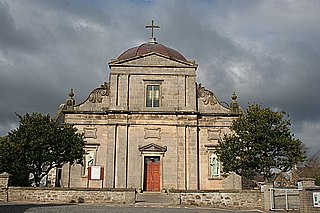
William Robertson was a Scottish architect. Born in Lonmay in Aberdeenshire, he started his career in Cullen, Moray, then moved to Elgin around 1821, where he practised for the rest of his life. He established himself as the foremost architect of his period north of Aberdeen, described by Charles McKean as "possibly the north of Scotland's first native classical architect of substance." His practice was continued by his nephews Alexander and William Reid, and their partners and successors J and W Wittet.
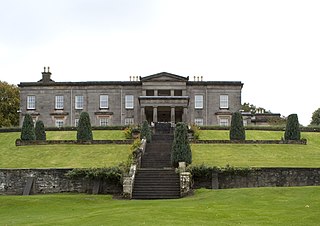
Aberlour House is a country house near Aberlour in Moray, Scotland. It was built in 1838 by William Robertson for Alexander Grant, planter and merchant from Aberlour, after his return to the UK. His niece, Margaret Macpherson Grant, lived in it after Grant died, and it was later home to John Ritchie Findlay of The Scotsman newspaper and his descendants. It was requisitioned for military use during the Second World War, and after the war was sold for use as a preparatory school for Gordonstoun. The school was later moved into Gordonstoun's estate, and the building was sold to Walkers Shortbread, who restored and renovated it, and now use it as their head office. It has been designated a Category A listed building.

Edinkillie House is a country house in Edinkillie in Moray, Scotland, built in 1822–1823 by John Paterson as a manse for the nearby Edinkillie Church. It has been designated a Category A listed building.

Moy House is an 18th-century country house near Forres in Moray, Scotland. Built on the site of an older house by Collen Williamson and John Adam in the mid eighteenth century for Sir Ludovic Grant of Grant, it was the first building designed by a member of the Adam family to be built in Moray. It was designated a Category A listed building in 1971, and has been listed on the Buildings at Risk Register for Scotland since 1990; ravaged by fire in 1995, it is now a ruin.
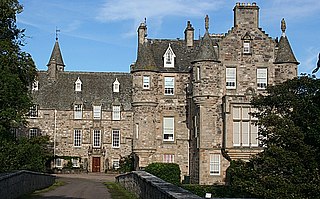
Cullen House is a large house, about 1 kilometre (0.6 mi) south-west of the coastal town of Cullen in Moray, Scotland. It was the seat of the Ogilvies of Findlater, who went on to become the Earls of Findlater and Seafield, and it remained in their family until 1982. Building work started on the house in 1600, incorporating some of the stonework of an earlier building on the site. The house has been extended and remodelled several times by prominent architects such as James Adam, John Adam, and David Bryce. It has been described by the architectural historian Charles McKean as "one of the grandest houses in Scotland" and is designated a Category A listed building. The grounds were enlarged in the 1820s when the entire village of Cullen, save for Cullen Old Church, was demolished to make way for improvements to the grounds by Ludovick Ogilvy-Grant, 5th Earl of Seafield; a new village, closer to the coast, was constructed for the inhabitants. Within the grounds are a bridge, a rotunda and a gatehouse, each of which is individually listed as a Category A structure.
References
- ↑ McKean, Charles (1987). The District of Moray - An Illustrated Architectural Guide. Edinburgh: Scottish Academic Press and RIAC Publishing. p. 57. ISBN 1873190484.
- ↑ Historic Environment Scotland. "Moy House and gatepiers (Category A Listed Building) (LB2275)" . Retrieved July 7, 2019.
- ↑ McLaurin, Stewart D. "A House Built of Virginia Stone". Virginia Museum of History and Culture. Retrieved April 14, 2020– via issuu.com.
- ↑ "Collen Williamson". Dictionary of Scottish Architects. Retrieved September 26, 2019.